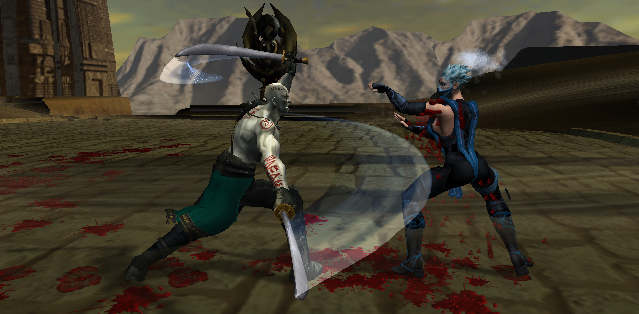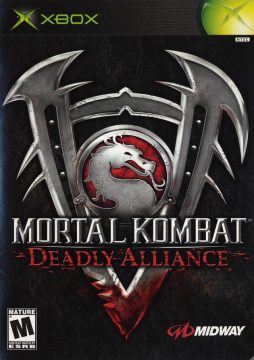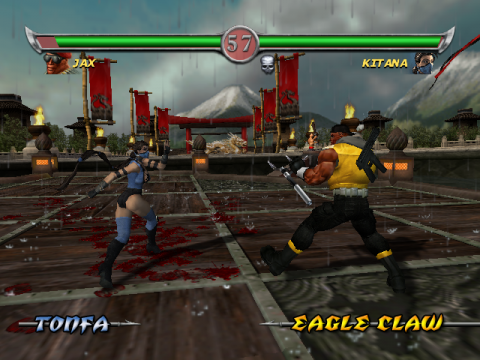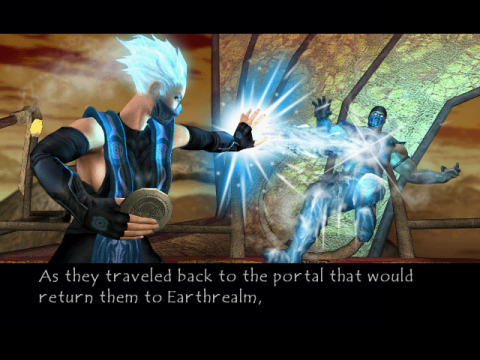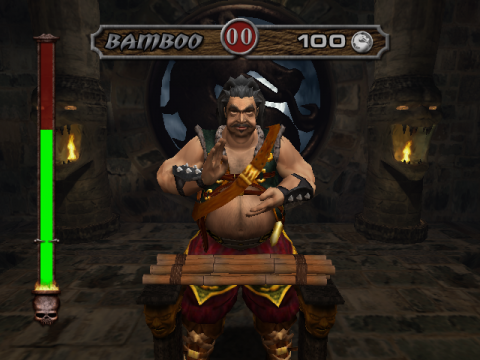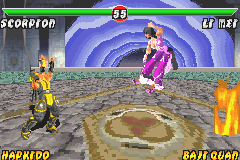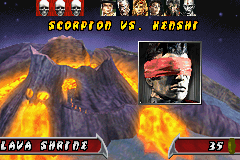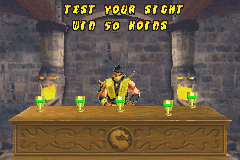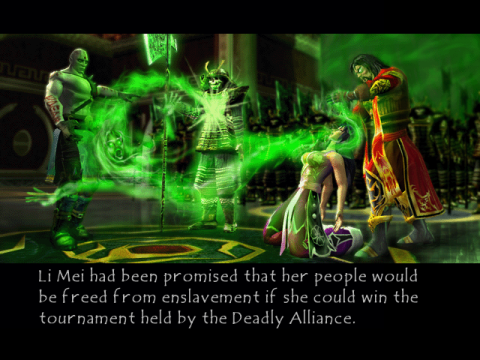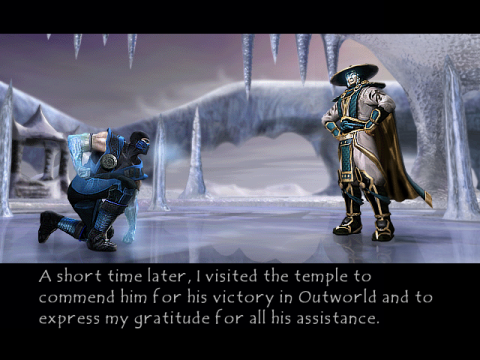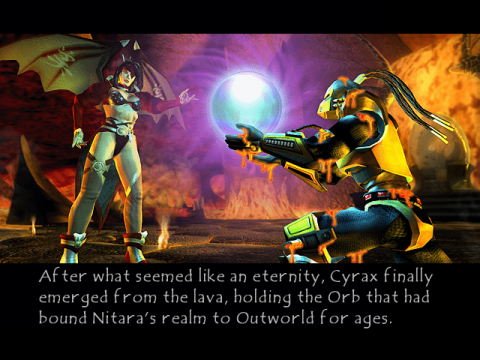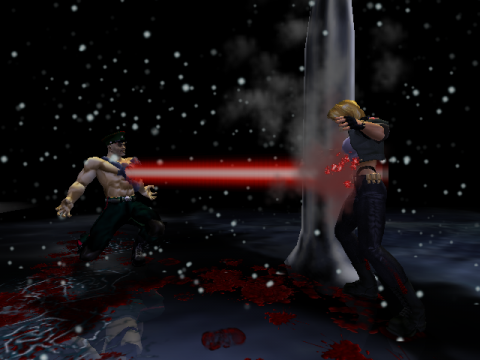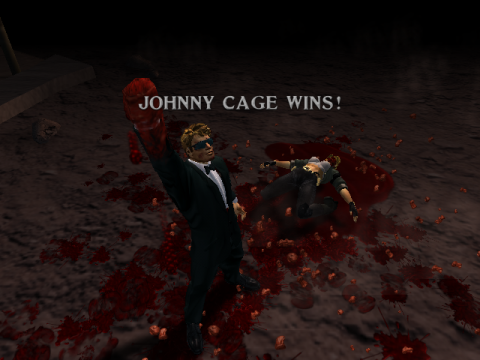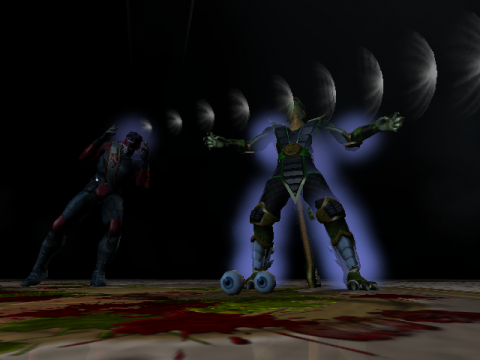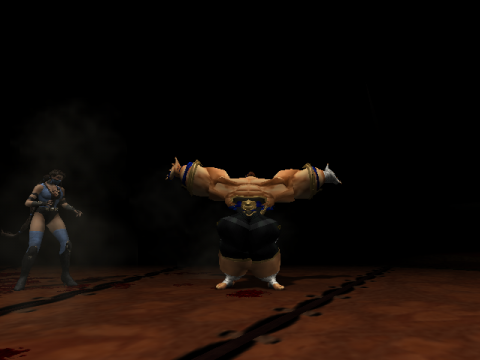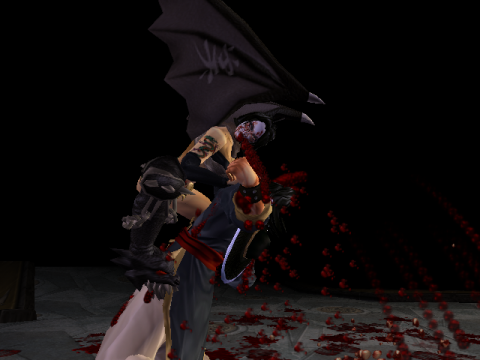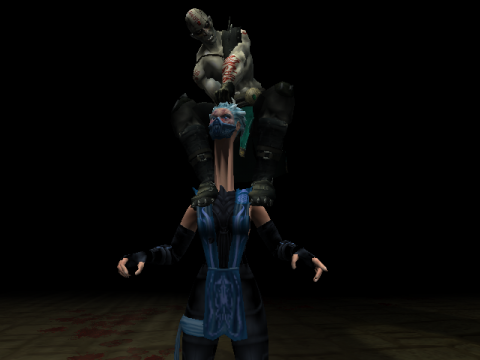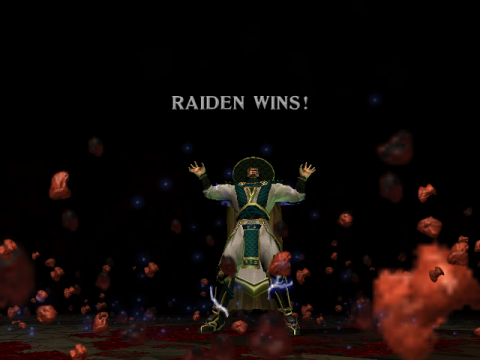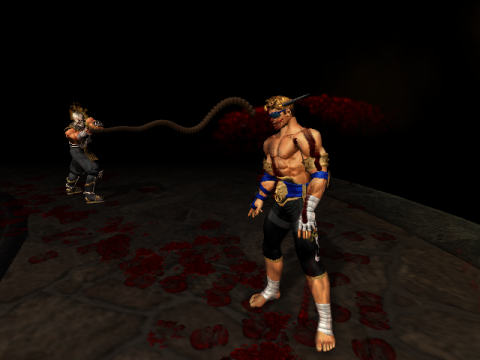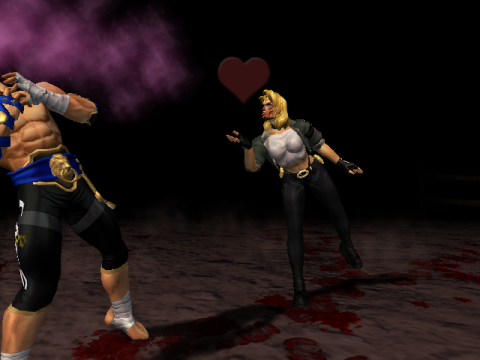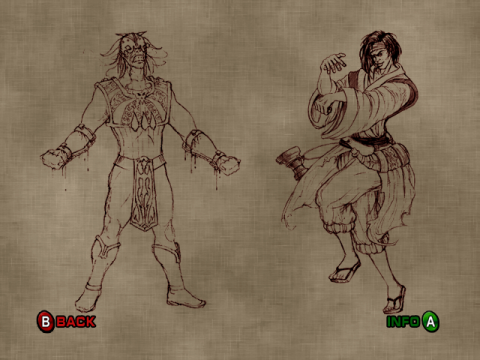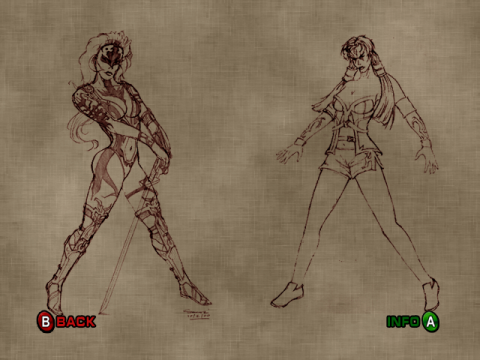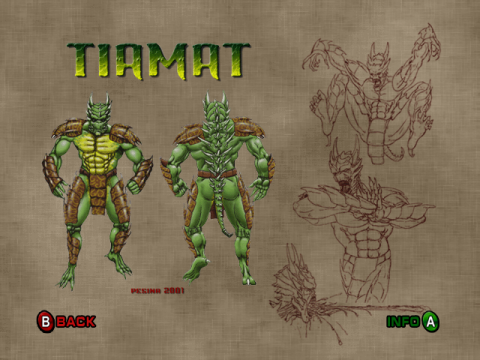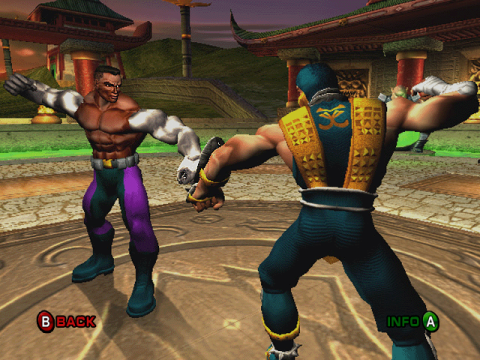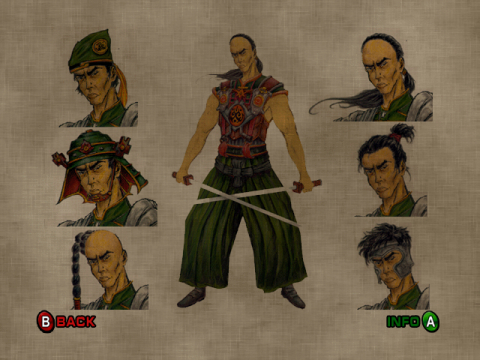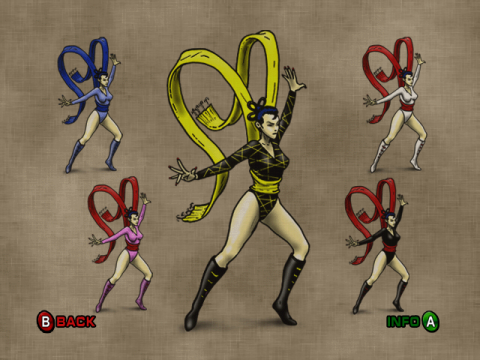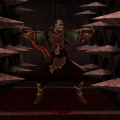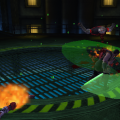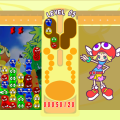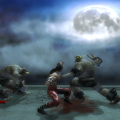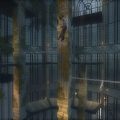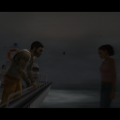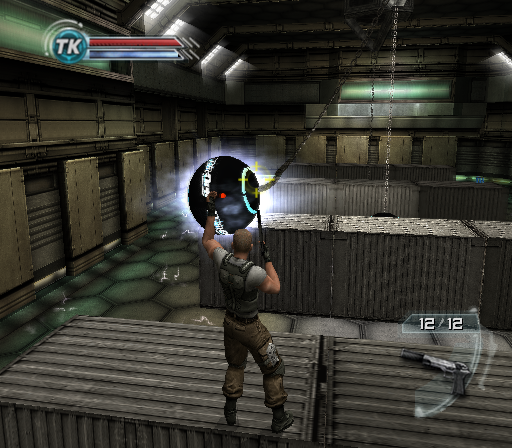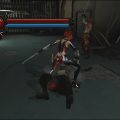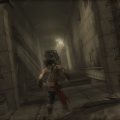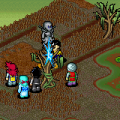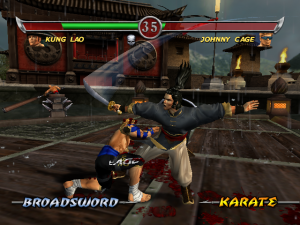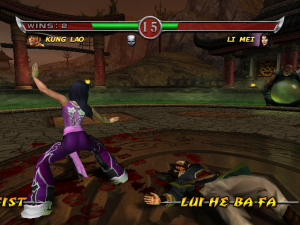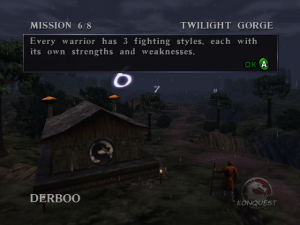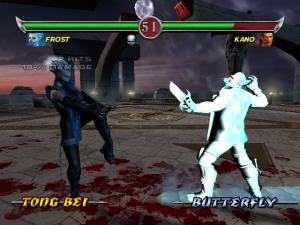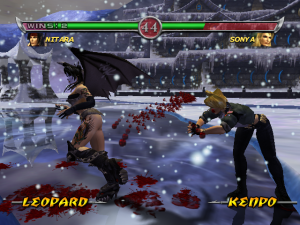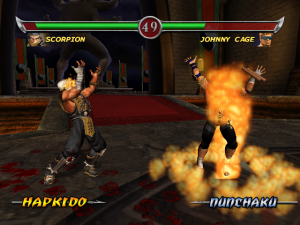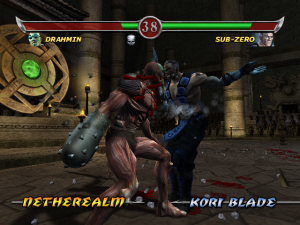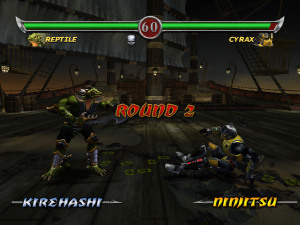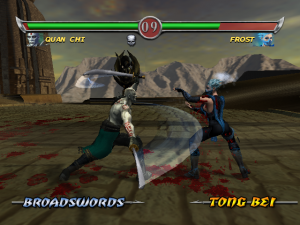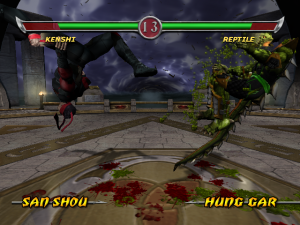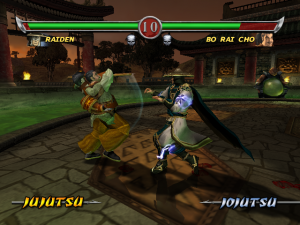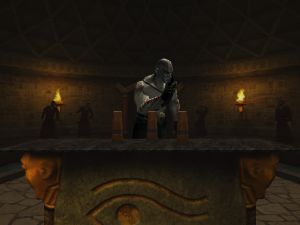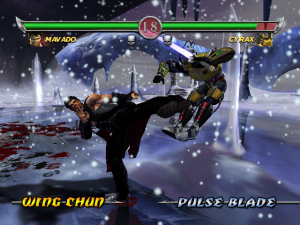- Mortal Kombat (Introduction)
- Mortal Kombat (1992)
- Mortal Kombat II
- Mortal Kombat 3
- Ultimate Mortal Kombat 3
- Mortal Kombat Trilogy
- Mortal Kombat 4
- Mortal Kombat Mythologies: Sub-Zero
- Mortal Kombat: Special Forces
- Mortal Kombat: Deadly Alliance
- Mortal Kombat Deception
- Mortal Kombat: Shaolin Monks
- Mortal Kombat Armageddon
- Mortal Kombat VS DC Universe
- Mortal Kombat (2011)
- Mortal Kombat X
- Mortal Kombat (Miscellaneous)
After the disaster that was Special Forces, nearly everybody agreed that Mortal Kombat needed a break. More importantly, it needed a retooling, something new and fresh to bring it in line with the competition. By this point, 2D fighters had almost completely fallen out of favor compared to 3D efforts like Tekken 4. This was also the point in time when arcades in the US had fallen out of favor compared to home consoles, which were no longer outclassed by arcade hardware. And so, Deadly Alliance was the first major game in the series to not be released in the arcades. It would also have an entirely redone fighting system to compete with the likes of Tekken. Did it work out? Er… not quite, sadly.
During the events of Mortal Kombat 4, Scorpion managed to drag his enemy Quan Chi down with him to the Netherrealm. Using Shinnok’s amulet, Quan Chi manages to escape, ending up in a tomb full of mummified soldiers. Turns out this is the army of Onaga the Dragon King, who ruled Outworld before Shao Kahn came along. The legends say that this army is supposed to be invincible; all they need is a big supply of souls and they’ll be ready to fight. So Quan Chi tracks down Shang Tsung, who tends to be an expert on souls and stuff. Shang Tsung can transfer the souls he steals into the Dragon King’s mummified soldiers, while Quan Chi can bring them back to life and under his control. And so, the (pause for dramatic effect) Deadly Alliance is formed.
Soon after their partnership is formed, they manage to get the drop on Shao Kahn and seemingly kill him. Once he’s out of the way, they ambush Liu Kang while he’s training. He puts up a valiant fight, but is eventually overwhelmed, and Shang Tsung manages to snap his neck. That’s right, the official hero of Mortal Kombat, the guy who’s been in every game for ten years, is dead. Raiden quickly rallies the good guys as soon as he hears the news. They all gather up in Outworld, and now it’s up to them to fight their way to the Deadly Alliance and thwart their plans before it’s too late. Liu Kang’s dead, so as you can expect, this isn’t really going to be a cheery game. The tone is more along the lines of MK4, keeping the dark and mystical feel while upping the blood and drama. And, of course, there are plenty of new characters, and to Midway’s credit, most of them do feel more unique than the losers in MK4. That doesn’t make most of them any good, mind you.
The fighting system’s been given a total overhaul since the days of MK4, a tweak that’s very much welcomed. The old high/low button setup has been thrown out entirely, along with the Run meter. You’ve still got four attack buttons, but these have been relabeled to the more generic Attack 1-4. Most of the time, Attack 1 and 2 will be punches, while 3 and 4 do kicks, although some characters will have exceptions to these rules. Blocking is still done with a separate button, however, as is MK tradition. There’s also more of a focus on 3D movement, so now you’re free to move in and out of the arena as much as you want by holding up or down, with jumps and crouches being performed by hitting one of the diagonal directions.
The biggest change to the system is that every playable character, with the exception of Blaze and Mokap, gets three fighting styles. Two of these are hand-to-hand fighting styles, like Hapkido, Judo, Jeet Kune Do, or Karate. The third fighting style is a weapon style, and this time around, the weapons are guven much more focus and are way more useful than in MK4. A little more thought has been put into who gets what kind of weapon this time around, so Sub-Zero has an ice sword, Raiden gets a staff, and the flashy Johnny Cage gets nunchaku. With rare exceptions, you can no longer lose your weapon, which makes them much more practical to use in kombat. For the most part, the weapons generally do more damage than either of your hand-to-hand styles, and supposedly, you take more damage when wielding them as a trade-off. If this is actually true, it’s so hard to notice that there’s not really much of a reason to not use your weapon as much as you can.
You can cycle through your three fighting styles at any time by hitting the style change button, and each style actually does represent a unique set of basic moves. Each button performs a different attack, and different moves can be done by hitting a direction along with one of the attack buttons, much like in Tekken. Every character still has a set of built-in combos, some of which involve switching fighting styles mid-combo. Some of these combos can get pretty lengthy, with up to twelve hits for certain characters. These combos can do major damage, and once you get stuck in one, there’s not much you can do besides waiting it out.
Throws are independent from style, and are done by hitting forward and the “special” button. Unlike every other fighting game ever made, however, it’s entirely possible to block a throw, making their actual usefulness dubious. Hitting the special button alone will activate some kind of special ability, depending on the style you’re using at the time. These special abilities range from unique attacks, to quick backward dashes, shoves, and even parries. Some characters can impale their opponents with their weapon, which will cause them to slowly lose health over time until they die. Sure, you lose the weapon for that round, but it means all you have to do is play keep away until your opponent keels over.
The fact that everybody gets their own unique set of special moves does help the characters stand out a little more than they used to. The problem is that with the fighting style gimmick, you basically have three sets of moves you have to learn and memorize. And compared to Tekken or Virtua Fighter, where characters get a variety of different ways to deal damage to the opponent, like charged punches, multi-step throws, or special stances, DA‘s characters feel kind of… basic. There’s not much separating Scorpion’s Hapkido from Quan Chi’s Escrima, aside from each of them having different kinds of punches and kicks. Just like the Mortal Kombat games of the past, the only thing really making each character unique are their special moves. And even then, some characters only get about two specials each, with most of them losing moves they had back in MK4. One way special moves have been improved, however, is that they’re now done with more “standard” inputs of the kind you’d see in most other 2D fighters. There aren’t any special moves that require you to hold a button or do a 360 motion, which does make memorizing them a little easier.
The combat mechanics have a very janky feel to them in general, and while not everybody was a fan of the way the older games worked, they were definitely more fluid. The biggest problem is that it feels like every move and combo has way too much recovery time, meaning you’ll be spending most of your time waiting for your fighter to go back into a neutral position instead of following up for a combo. It’s still possible to juggle opponents by using moves that pop them into the air, but for the most part, combos feel a lot more limited, and you’re probably just better off spamming the best chain combo your character has. These tend to do so much damage that if you can actually memorize them, they’re the best strategy, anyway.
Every stage is generally a big, flat circle, and they’re big enough that you get to use your new-found freedom to sidestep pretty well. They’re also apparently surrounded by some kind of force field that will activate if an opponent gets knocked into the edge of a stage, doing a little extra damage. Some arenas also have small obstacles like statues or rocks you can knock your opponents into, causing them to shatter. There’s also one arena where statues will spray acid on anybody who gets too close, draining their health. Sadly, however, stage Fatalities are gone entirely.
This time around, every character only gets one Fatality, compared to the two that almost every character had from MK2 onwards. Most of the Fatalities are pretty brutal, like Johnny Cage ripping out his opponent’s brain, or Reptile melting the flesh off of the opponent’s skull with his acid before eating it. One highlight in particular is Quan Chi’s Fatality, but only because of how incredibly stupid it is. He leaps onto the other kombatant’s shoulders, grabs them by the head, and starts tugging on it. Instead of tearing their head off, however, all it does is make their neck stretch out like taffy. The victim stumbles around for a few moments before falling over, not shedding a single drop of blood. Fans of Team Fortress 2 will probably be reminded of the infamous nope.avi video.
The standard arcade mode has you fight through a series of opponents before the battle with Moloch. Just like all the sub-bosses before him, he will utterly demolish you until you manage to exploit his pattern enough you can actually win. Moloch’s immune to projectiles, does a big chunk of damage with each of his hits, and can suck you towards him to get you from long range. If you can get past him, however, the final two fights against Quan Chi and Shang Tsung should give you no problems. Just like Shinnok, there’s absolutely nothing separating them from their playable versions, especially since Shang Tsung has completely lost his ability to morph. You don’t even get an elaborate death sequence for killing them, just a picture of them lying there dead. For an ending, you get a few still images with some narration, and considering how awful MK4‘s endings got, that was probably the best way to handle it.
There are also a couple of minigames on your way up the arcade ladder. The first is Test Your Might, which finally returned after a ten-year absence. It basically works the same way as it did in the original Mortal Kombat, where you mash buttons to build a meter up to a certain point. If you succeed, you’ll smash the block in front of you and earn some koins for it. Fail, and your fighter will break their hand and get laughed at by an audience. There’s also Test Your Sight, which is basically a variation on the shell game. A bunch of cups move around, and if you pick the one that’s hiding the dragon symbol, you get a koin bonus. There’s a nice touch here if you’re playing as Kenshi, who uses his hearing to listen to the cups move around instead of looking at them.
The other main single player mode is the Konquest Mode, which is the closest thing Deadly Alliance has to a dedicated story mode. It’s more of a glorified tutorial than anything else, though, not that there’s anything in this game that’s worth learning. Your progress through this mode is represented by a Shaolin monk who moves forward through different areas with each challenge you complete. There are ten training missions that explain the basic controls of the game, along with ten missions for each character, for a total of 218 missions. Each time you’re fed a little bit of story through a text box, then made to practice some moves and combos. Sometimes you get a mission where the dummy will actually fight back, but pretty much all the challenge there is limited to pulling off some of the trickier combos. At least some of the text is kind of amusing, like a reference to Culture Club and the reveal that Johnny Cage was once a contestant on Smash TV. If you complete the entire Konquest mode, you unlock Blaze and Mokap as playable characters, which, given how long and boring Konquest mode actually is, isn’t really worth it at all.
Completing missions in Konquest mode, playing through the arcade mode, and winning minigames will bring you koins, which you can spend in the Krypt. The Krypt is a huge tomb with 676 coffins, each costing a certain amount of koins to open. For whatever reason, however, the koins come in a variety of colors, and you can only open coffins of the matching type. Got a lot of gold koins, but not many in jade? Too bad, because there’s no way to exchange them. Hope you enjoy grinding! What’s even worse, the kind of koins you get seems to be random, and some seem to be rarer than others. So opening a koffin that costs 1,000 of one type of koin will take a lot longer than a koffin that costs the same amount of another. There’s a very weird way the game handles saving what you earn in the krypt, forcing you to create a profile and a password to protect it. Apparently this is so you can wager koins against other players’ profiles, but it’s still a lot of effort for such a dumb idea.
By opening the coffins, you unlock new characters, stages, and alternate costumes. Minor rewards include concept art, test renders, photos of stuff around the Midway office, and other curiosities. The cool thing about each picture is that it comes with a small description, which is especially interesting for things that got cut out of the game. There’s also goofier content, like fake advertisements for Kan-O’s, the breakfast cereal that turns your milk blood red. The highlight, however, would have to be “Cooking with Scorpion,” a fake commercial for a cooking show where Scorpion chops things, tenderizes things, chops things, decorates cakes, and chops things. That’s not a typo, by the way.
While its visuals are leagues above Mortal Kombat 4, Deadly Alliance still doesn’t look particularly good. The characters have a plastic figurine look, about on par with the obscure Xbox fighter Tao Feng: Fist of the Lotus, which was made by Mortal Kombat co-creator John Tobias. But while Tao Feng showed bruises and cuts over the whole character model, in Deadly Alliance only the faces show wear towards the end of the round. The blood is once again hilariously exaggerated, and looks like someone just threw a bunch of red marbles with varying sizes into the air. Other special effects like fire aren’t much more impressive, but certainly less funny. Stages are designed well enough, but with few exceptions they feel empty and lifeless, and some faraway objects are very obvious bitmaps. There are some nice visual touches, like the way Scorpion will throw his spear into the air to pull himself off the floor after losing a match, but it doesn’t help the characters to feel any more distinct.
The Game Boy Advance version is actually split into two games, one with the Deadly Alliance title and one titled Mortal Kombat: Tournament Edition – not that you’re ever likely to find any kind of professional tournament that would run either version. They both play more or less exactly the same, but Tournament Edition has a few exclusive characters, including one of Sareena’s very few playable appearances. It also has a few extra modes, including a training mode and a Tag Team mode, where you can use the Select button to switch between fighters. Tournament Edition also has a second, weapon-based Fatality for every character, although none of these are all that impressive. It should be said that Deadly Alliance GBA is a much, much, much better game than Mortal Kombat Advance. It’s by no means amazing, but that should still be pointed out first and foremost. What’s impressive about this particular port is that it’s actually been made to play as closely to the console versions as the GBA’s hardware can handle.
The controls work similarly to the console versions, only you’re given two attack buttons to work with. Each fighter retains the two hand-to-hand fighting styles, although you don’t get nearly as many moves and combos as the console versions. There’s no third style for the weapons; instead, you pull off weapon-based moves by performing special move inputs. The problem, however, is that the controls tend to be a little sluggish, and some of the animations are kind of slow, so don’t expect to pull of any particularly fancy juggle combos.
The fighters’ sprites seem to have been made from the same models as the console versions, and put into sprite form. If you’ve ever played Tekken Advance, it’s a lot like that. The animation suffers for it, though, and the blood looks even cheaper than the big red spurts of jelly you’d see on the console versions. The arenas use a Mode 7 tiled floor with a static looking background, which, while not really the fanciest way to handle a 3D playfield, means that you get plenty of room to move around. This version’s also a little easier to finish than the console versions, mostly because Moloch is thankfully nowhere to be seen. Quite a few of the extra features from the console versions are included, like the Test Your Might & Sight minigames, and a Krypt to spend your koins in. It’s not a bad conversion for the hardware, overall, but you’d probably be better off getting something like the Street Fighter Alpha 3 port. Or Deception: Unchained for the PSP.
Ending Scenes
Fatalities
Concept Art
